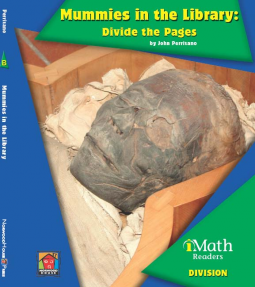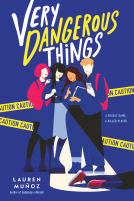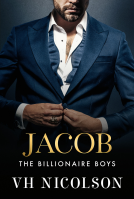
Mummies in the Library: Divide the Pages
by John Perritano
This title was previously available on NetGalley and is now archived.
Send NetGalley books directly to your Kindle or Kindle app
1
To read on a Kindle or Kindle app, please add kindle@netgalley.com as an approved email address to receive files in your Amazon account. Click here for step-by-step instructions.
2
Also find your Kindle email address within your Amazon account, and enter it here.
Pub Date Apr 06 2015 | Archive Date May 01 2015
Description
A Note From the Publisher
Real Life Situations: Introduces a real life problem or situation that can be solved with a working knowledge of the math topic.
iMath Ideas: Takes a look at several ways of using math to solve the problem. Asks the reader to think about and choose which method works best for them.
Discover Activity: Activities to strengthen math skills taught in the text.
Storyline Approach: iMath uses a storyline approach. Math concepts are reinforced through age-appropriate characters, topics, and storylines. As the CCSS concepts get more in depth, the storylines and text become more complex, as well.
Connections to Language Arts, History, or STEM.
Career Connections: Math at Work sections highlight jobs that use math on a daily basis. Great for college and career readiness.
What Comes Next?: Activities designed to strengthen Science, Technology, Engineering, or Math through engagement and extension.
Additional Notes: Includes a full answer key, with solutions for each math problem presented, for educators and parents.
Table of Contents, Glossary, Further Reading, Index
Advance Praise
Part of the iMath Readers series, this uses a thin fictional story line involving a young boy’s visit to the library for a book on mummies (thus the title) to introduce the concept of division. Division problems are woven into the story line (for example, how many days will it take the narrator to read his 160-page book?), followed by information about Egyptian mummies and a few more division problems. The information about mummies connects a range of topics to curriculum segments. For example, the page on the Great Pyramid of Giza is called “Connecting to Engineering.” This series is specifically designed to fulfill STEM and Common Core standards and should be useful to educators looking to provide titles on specific aspects of math. The mummy connection, meanwhile, might make the math lessons go down a bit easier for some.
Booklist
"If looking for a one-stop shop, Norwood's "iMath" provides a comprehensive set of CCSS-friendly resources that offer multiple strategies to problem solving. The mix of language arts and math will appeal to teachers."
"These comprehensive CCSS resources have an appealing layout and attractive photos, charts, maps, diagrams, and illustrations. The texts are a busy mix of language arts and math; each volume contains an engaging story line and information that will draw in readers. For example, Mummies combines directions about division with facts about embalming. Every book begins with “iMath Ideas,” which introduce a concept, pose a math problem, and provides strategies for getting the answer. The strategies are reiterated at the end of the book. Questions throughout encourage student engagement. Also of interest are a “Discover Activity” and an informational section that connects the discussion to science, history, or art. Each book ends with a “What Comes Next” page that gives ideas for expanding on the concepts learned and an “Additional Notes” section that provides answers to the various problems. Do not expect intense computational practice; the casual approach may work well with reluctant math students.
School Library Journal
Marketing Plan
No Marketing Info Available
No Marketing Info Available
Available Editions
| EDITION | Hardcover |
| ISBN | 9781599535586 |
| PRICE | $16.95 (USD) |
Average rating from 3 members
Featured Reviews
 Elaine B, Reviewer
Elaine B, Reviewer
This is an iMaths reader filled with real life situations in which there is some need to divide. It doesn’t suggest only one way to solve problems but shows a selection of techniques, asking the reader if this is a good way to find the answer and then why - or why not. The same techniques are then applied in different real life contexts, most of which children will find it easy to relate to.
What a great way to introduce division in a way that will grab children’s interest. I also like the links to Ancient Egypt, sports and libraries. There is also a glossary, suggested further reading and additional notes. A superb book that, as a parent or teacher, I could certainly use with children in my care. I highly recommend that parents and teachers check this out to enthuse children about division, libraries and Ancient Egypt asap!
Thanks to the author, publishers and NetGalley, too, for letting me read an ARC of this book in exchange for an honest review.
Definitely liked this one for my older students, for those who are on grade level or above for reading. It will reinforce the division concepts and is something they can do independently. I could also use it with my younger students (4th/5th) who are not on grade level in reading or math, but would understand several of the concepts used such as the number lines and arrays, which they seem to o best with.









